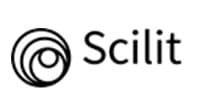Submissions
Submission Preparation Checklist
As part of the submission process, authors are required to check off their submission's compliance with all of the following items, and submissions may be returned to authors that do not adhere to these guidelines.- The submission has not been previously published, nor is it before another journal for consideration (or an explanation has been provided in Comments to the Editor).
- The submission file is in OpenOffice, Microsoft Word, or RTF document file format.
- Where available, URLs for the references have been provided.
- The text is single-spaced; uses a 12-point font; employs italics, rather than underlining (except with URL addresses); and all illustrations, figures, and tables are placed within the text at the appropriate points, rather than at the end.
- The text adheres to the stylistic and bibliographic requirements outlined in the Author Guidelines.
Literature Review
Describen y/o recopilan los desarrollos más recientes o trabajos publicados sobre un determinado tema, aportando siempre alguna mejora, complemento o perspectiva original que también debe destacarse expresamente. Son una síntesis teórica docente y una visión actual del tema abordado y, sobre todo de resaltar lo que puede suponer de aportación novedosa sobre él. .
Cómo elaborarla:
- Reunir toda la información posible en fichas de síntesis: ideas principales del autor, resultados de la investigación y referencia bibliográfica completa.
- Clasificar las fichas en subtemas. Por ejemplo, autores que se complementan o que no están de acuerdo sobre un mismo asunto.
- Debe tenerse en cuenta que se trata de una síntesis, de manera que se citará lo menos posible en forma literal. Se trata de parafrasear las ideas manteniendo estrictamente el sentido con que fueron escritas.
- Comenzar definiendo el tópico que se quiere tratar. Se darán definiciones de diversos autores, tratando de unir con la redacción, aquellos que tienen definiciones semejantes y establecer un contraste con los que piensan diferente.
- Hacer un desarrollo del tópico o tema dentro de un “diálogo” de lo que han encontrado los autores citados.
- Escribir un párrafo corto de cierre, apoyado sobre el pensamiento de los autores citados.
- Tener en cuenta que una reseña es mejor cuando tiene la mayor cantidad de conceptos e ideas hilados, y la mayor cantidad de autores citados en el mínimo espacio posible. Se valora la SÍNTESIS.
La extensión de las reseñas debe ser de 1 página mínimo y 5 páginas máximo.
Essays
Es un escrito en prosa, generalmente breve, que expone con hondura, madurez y sensibilidad, una interpretación personal sobre cualquier tema, sea filosófico, científico, histórico, literario, etc. No lo define el objeto sobre el cual se escribe sino la actitud del escritor ante el mismo; en el fondo, podría ser una hipótesis, una idea que se ensaya. El ensayo es producto de largas meditaciones y reflexiones, lo esencial es su sentido de exploración, su audacia y originalidad, es efecto de la aventura del pensamiento.
Partes de un ensayo:
- Introducción o planteamiento: Es una de las partes fundamentales del ensayo, para poder cautivar? atrapar o hechizar al lector. Esta se hace a partir de una opinión, de una pregunta, de una hipótesis o de un pensamiento metafórico.
- Desarrollo: tiene que ver con el procesob argumentativo de las ideas principales, secundarias y periféricas, las cuales acompañadas de citas, ejemplos, pruebas y registros lograrán sustentar la tesis principal del ensayo.
- Conclusión: Si el comienzo del ensayo, se presenta una tesis una hipótesis es necesario desarrollarla para poderla comprobar o desaprobar a través del proceso argumentativo.
- La Extensión del ensayo: con respecto a la extensión del ensayo, podríamos plantear que es relativa, pues un ensayo argumentativo, puede requerir mayor cantidad de hojas que un ensayo expositivo, crítico o poético. Algunos autores plantean rangos entre 3 ó 10 hojas. Al respecto es necesario aclarar que sea cual sea la extensión, debe de existir el planteamiento de una tesis, en su respectivo desarrollo de pros y contras, lo mismo que las síntesis correspondientes, pues el ensayo es una pieza de escritura completa.
La extensión del ensayo debe ser de 1 página mínimo y 5 páginas máximo.
Article
Es un documento cuyo objetivo es difundir de manera clara y precisa, en una extensión regular, los resultados de una investigación realizada sobre un área determinada del conocimiento. Se aceptan también artículos provenientes de trabajos de tesís de pregrado cuyo rendimiento es igual o mayor a 90 puntos. Generalmente, presenta los antecedentes de un estudio, su justificación, la metodología empleada, los resultados obtenidos, los alcances del trabajo y sugerencias para investigaciones posteriores relacionadas con la problemática abordada. Se redacta en tercera persona y con los verbos en su forma de pasado.
La extensión de los artículos debe ser de 7 páginas mínimo y 15 páginas máximo.
Profile
Es un documento cuyo objetivo es difundir de manera clara, precisa y objetiva, la trayectoria, obra y perspectiva de un arquitecto, a fin de lograr una mayor apreciación de su obra o corriente de pensamiento en el campo de la arquitectura. Así mismo, un perfil permite conocer acerca de las tendencias en arquitectura en relación a los avances y técnicas, estableciendo un fomento a la innovación y creatividad.
Copyright Notice
In order to make evident the integrality of the authors who collaborate in the journal and their work, the main author of each article and essay must write a letter in which they assure that the material presented is unpublished and that it will not be nominated or will present in any other medium before knowing the decision of the editorial team of ARQUITECTURA + magazine.
The author conserves the copyright of the article, however the National University of Engineering and the Editorial of the ARQUITECTURA + Magazine reserves the exclusive rights of first publication and reproduction of the material here, governed by an open access policy, under the Creative license Commons Attribution-NonCommercial-NoDerivatives 4.0. The authors of each submitted manuscript must read, sign, and send the Letter of Originality and Copyright at the time of submission.
Privacy Statement
The names and email addresses presented to this journal will be used exclusively for the established purposes and will not be provided to third parties for any other use.


















